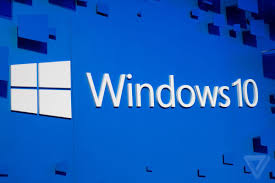Microsoft takes legal action against COVID-19-related cybercrime
Today, the U.S. District Court for the Eastern District of Virginia unsealed documents detailing Microsoft’s work to disrupt cybercriminals that were taking advantage of the COVID-19 pandemic How To Get Help in Windows 10 Keyboard in an attempt to defraud customers in 62 countries windows 10 version 2004 problems around the world. Our civil case has resulted in a court Get Help in Windows 10 order allowing Support.Microsoft.Com/Help Microsoft to seize control of key domains in the feature update to windows 10 version 2004 criminals’ infrastructure so that it can no longer be used to execute cyberattacks.
Microsoft’s Digital Crimes Unit (DCU) first observed these criminals in December 2019, when they deployed a sophisticated, new phishing scheme designed to compromise Microsoft customer accounts. The criminals attempted to gain access to customer email, contact lists, sensitive documents and other valuable information. Based on patterns discovered at that time, Microsoft utilized windows 10 version 2004 problems technical means to block the criminals’ activity and disable the malicious application used in the attack. Recently, Microsoft observed renewed attempts by the same criminals, this time using COVID-19-related lures in the phishing emails to target victims.
This malicious activity is yet another form of business email compromise (BEC) attack, which has increased Get Help in Windows 10 in complexity, sophistication and frequency in recent years. According to the the most-costly How To Get Help in Windows 10 Keyboard complaints received by their Internet Crime Complaint Center (IC3) involved BEC crimes, with losses of over $1.7 billion, representing nearly half of all financial losses due to cybercrime. While most of Support.Microsoft.Com/Help the public’s attention in recent years has justifiably focused on the malign acts of nation state actors, the increasing economic harm caused by cybercriminals must also be considered and confronted by the public and private sectors. For our part, Microsoft and our feature update to windows 10 version 2004 Digital Crimes Unit will continue to investigate and disrupt cybercriminals and will seek to work with law enforcement agencies around the world, whenever possible, to stop these crimes.
These cybercriminals designed the phishing emails to look like they originated from an employer or other trusted source and frequently targeted business leaders across a variety of industries, attempting to windows 10 version 2004 problems compromise accounts, steal information and redirect wire transfers. When the group first began carrying out this scheme, the phishing emails contained deceptive messages associated with generic business activities. For example, the malicious link in the email was titled with business terms such as “Q4 Report – Dec19,” as seen below.
With these recent efforts, however Get Help in Windows 10, the phishing emails instead contained messages regarding COVID-19 as a means How To Get Help in Windows 10 Keyboard to exploit pandemic Support.Microsoft.Com/Help-related financial concerns and induce targeted victims to click on malicious links. For example, using terms such as “COVID-19 Bonus,
Once victims clicked on the deceptive links, they were ultimately prompted to grant access permissions to windows 10 version 2004 problems a malicious web application (web app). Web apps are familiar-looking as they are widely used in organizations to drive productivity, create efficiencies and increase security in a distributed network. Unknown to the victim, these malicious web apps were controlled feature update to windows 10 version 2004 by the criminals, who, with fraudulently obtained permission, could access the victim’s Microsoft Office 365 account. This scheme enabled Support.Microsoft.Com/Help unauthorized access without explicitly requiring the victims to directly give up their login credentials at a fake website or similar interface, as they would in a more traditional phishing campaign.
After clicking through the consent prompt for the malicious web app (pictured below), the victim unwittingly Get Help in Windows 10 granted criminals permission to access and control the victims’ Office 365 account contents, including email How To Get Help in Windows 10 Keyboard , contacts, notes and material stored in the victims’ OneDrive for Business cloud storage space and corporate SharePoint document management and storage system.
Microsoft takes many measures to monitor and block malicious web apps based on telemetry indicating atypical behavior and has continued to enhance our protections based on this activity. In cases where criminals How To Get Help in Windows 10 Keyboard suddenly and massively scale their activity and move quickly to adapt their techniques to evade Microsoft’s built-in defensive windows 10 version 2004 problems mechanisms, additional measures such as the legal action filed in this case feature update to windows 10 version 2004 are necessary. This unique civil case against COVID-19-themed BEC attacks Support.Microsoft.Com/Help has allowed us to proactively disable key domains that are part of the criminals’ malicious infrastructure, which is a critical step in protecting our customers.





Comments
Post a Comment